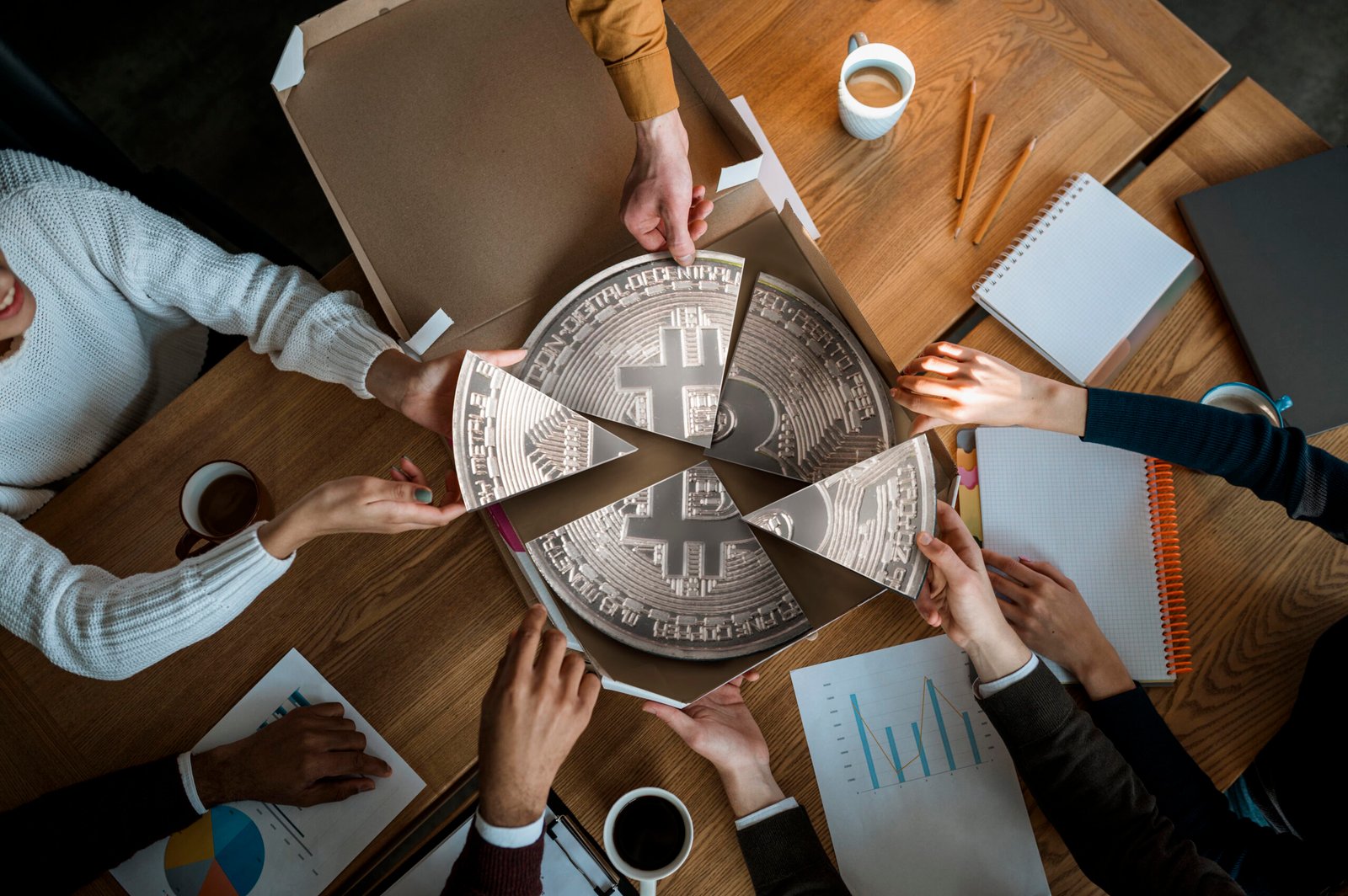Introduction
The XRP futures is one of the most discussed theme in crypto world. After enduring several years of turbulence, Ripple and its digital XRP coin are cruising into a new phase. A once-hazy path is clearer than ever. All eyes are on Ripple as it makes major moves that could alter the course of world finance and the uncaring economy. This is not another cryptocurrency fable. It is the dawn of a new age for digital payments and blockchain.
What Is XRP?
XRP is the native digital currency of the Ripple network. It is supposed to make cross-border transactions quicker, less expensive and more efficient. Unlike Bitcoin, which was intended to be a decentralized form of money, XRP aims to solve real-life issues in banking and payments.It acts as a bridge currency that enables instant money transfers between different fiat currencies.
A Brief History of Ripple and XRP
Ripple Labs originated and launched XRP in 2012, with the goal to transform cross-border payments. Ripple has worked with a variety of banks and digital money companies globally in recent years. And where a few years ago Ripple’s claims were met with skepticism, it has shown that is has the goods to bring blockchain-based products that slash transaction fees and processing times from days down to just seconds.
The Turning Point: Overcoming Legal Challenges
Ripple’s journey wasn’t easy. The lawsuit from the U.S. Securities and Exchange Commission (SEC) in 2020 was a major setback. It questioned whether XRP was a security. Many investors feared the worst. But Ripple fought back. In 2023, a Court Decision in U.S. provided much needed clarity — XRP is not a security; and more than 90% of RippleNet customers are out-side the United States. It was then that XRP’s future took a U-turn and investor confidence was restored.
How the SEC Case Changed the XRP Landscape
The legal victory didn’t just help Ripple. It did a favor to the entire crypto industry in creating a precedent of regulatory clarity. Post judgment, XRP was relisted on major exchanges, and turn around in trading volumes and market sentiment took place. The case demonstrated that Ripple was tough and established it as a credible player in the blockchain universe.
Ripple’s Global Partnerships and Real-World Use Cases
Ripple’s network includes hundreds of financial institutions worldwide. Banks like Santander, PNC, and SBI Holdings use Ripple’s technology for fast, cross-border settlements. XRP plays a vital role in these systems, providing liquidity and reducing transaction costs. This global adoption shows that the XRP future isn’t built on hype — it’s built on utility.
Why Banks and Financial Institutions Trust Ripple
Traditional banks often struggle with outdated systems that are slow and expensive. Ripple offers a modern solution with transparency, traceability, and near-instant settlement. By using xrp future as a bridge currency, banks can avoid holding multiple foreign currencies and reduce operational costs. This trust from financial institutions is one of the strongest pillars of XRP’s long-term success.
XRP’s Unique Technology: Speed, Scalability, and Sustainability
XRP’s technology gives it a major edge. The transactions on the Ripple network complete in 3-5 seconds. The blockchain is capable of 1,500 tps, placing it among the fastest in the sector. Contra Bitcoin and Ethereum, bei xrp future wird ein Ressourcenverbrauch auf Umweltverschmutzung hin minimiert. These, the features which make the XRP future not only bright but also sustainable.
Market Sentiment and Investor Confidence
Investor confidence in XRP is growing again. The positive legal outcome, coupled with Ripple’s continuous expansion, has boosted trust. Traders are once again looking at XRP as a long-term investment, not just a short-term trade. Social media buzz and analyst reports all point toward a recovery and renewed optimism.
Price Trends and Future Projections
XRP’s price history is a roller coaster — from fractions of a penny to over $3 during its peak. While volatility remains, experts predict steady growth ahead. Some forecasts suggest that if Ripple maintains momentum, XRP could see significant appreciation by 2026. Its use in global payments and institutional adoption will be key drivers for the XRP future.
Expert Opinions on XRP’s Long-Term Value
XRP is considered by financial analysts as one of the very few crop that actually do something useful. XRP’s value unlike many speculative tokens is driven by real-world use cases for cross-border products. Analysts say the fact XRP is being increasingly adopted by its market as a bridge currency through Ripple’s partnerships and expansion in developing nations, could see it to mass adoption.
The Role of Blockchain in Ripple’s Future Growth
Blockchain is at the heart of Ripple’s innovation. It ensures transparency, security, and decentralization while streamlining financial processes. As more institutions embrace blockchain for remittances and settlements, XRP’s role will grow stronger. The XRP future could become a model for how blockchain transforms traditional banking.
How XRP Stands Out from Other Cryptocurrencies
Whereas bitcoin can be used as a store of value and Ethereum can provide a platform for employment contracts, XRP is designed ENTIRELY with the banking industry in mind, and it does this by being tailored to work on cross-border transactions. It works fast and at low cost and scales easily. The fact that XRP is about real-world utility gives it a long-term edge over speculative coins with no use.
Potential Risks and Market Challenges
Despite the optimism, challenges remain. Market volatility, regulatory ambiguity overseas and competition from new blockchain initiatives could hamper XRP’s progress. But Ripple’s robust base and expanding network have arms strong enough to counter many of these hurdles.
Why the XRP Future Looks Brighter Than Ever
The stars are aligning for Ripple. With legal clarity, expanding partnerships, and growing adoption, the XRP future looks incredibly bright. Ripple has transformed its setbacks into strengths. It has positioned itself as a leader in the next phase of global finance — one built on speed, efficiency, and innovation. For investors, this marks the beginning of a new era.
How Investors Can Prepare for the Next Ripple Boom
Is this way of investing the preferred among all? No, not at all. Instead it is a game changer in how people invest in companies like Ripple and banks as we know them today! Everyone should stay informed and keep an eye on what Ripple does next! Long-term investing strategies could gain from the company’s increasing presence in the financial universe. As the xrp future materializes, waiting playing smart by diversifying early and reading up on your gem so you’ll know when to jump in is going to be crucial for any maximum gains.
Conclusion
The story of XRP is one of resilience, innovation, and transformation. From legal battles to global expansion, Ripple has proven its strength. The future of XRP, however, is not only digital currency: it’s about changing the way the world moves money. With adoption increasing while technology continues to advance, Ripple and xrp future are set to revolutionise finance and payments in a way that might never be reversed.
FAQs
- Is XRP a good investment for the future?
XRP’s strong fundamentals and growing utility make it a promising long-term investment, but like all crypto assets, it carries risks. - What makes the XRP future so promising?
Ripple’s partnerships, regulatory clarity, and efficient technology give xrp future a strong edge in the financial sector. - Can XRP reach its previous all-time high again?
Many analysts believe that if market conditions remain favorable, XRP could revisit or even surpass its previous highs. - How is Ripple different from Bitcoin and Ethereum?
Ripple focuses on fast, low-cost international payments, while Bitcoin and Ethereum serve other purposes like digital currency and smart contracts. - What are the main challenges for XRP?
Regulatory uncertainty, market volatility, and competition are key challenges, but Ripple’s progress continues to strengthen its position.



